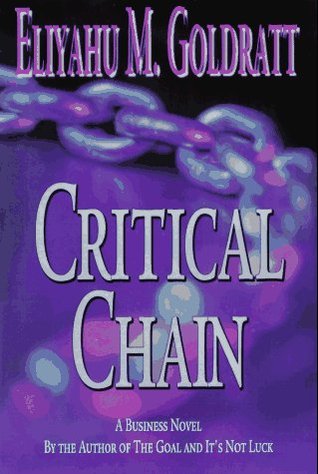More on this book
Community
Kindle Notes & Highlights
"Isaac," he had said, "a senior person is already engraved with the way we are doing things. If there is someone who can find us a much better way, it's a young person. Young enough to be rebellious, young enough to be unsatisfied with our rules. Do you remember how young and inexperienced we were when we started? We broke every convention, and look at where we are now!"
It's supposed to describe the lifetime of a product. First, sales are picking up as the product is introduced into the market, then they stabilize—it becomes a mature product, and finally, it fades out. Does it fit what we know about our products?"
"We concluded that the uncertainty existing in every project is the underlying main cause for most problems. Now we see that people are not blind to it and they do add a lot of safety in their planning. Do you agree that we must investigate, more deeply, this issue of safety?"
Companies are so immersed in the mentality of saving money that they forget that the whole intention of a project is not to save money but to make money.
"The critical path," I remind the class, "determines the time it will take to finish the project. Any delay on the critical path will delay the completion of the project. That's why the project manager must focus on it."
In order to manage well, managers must control cost, and at the same time, managers must protect throughput—they must ensure that the right products will reach the right clients in a way that they will pay for them."
"It implies a management philosophy. It implies that any local improvement automatically translates into an improvement of the organization. Which means that to achieve the global improvement, the improvement of the organization, we know that we have to induce many local improvements. I call it the ‘cost world."'
"Since TOC accepts ‘controlling cost' as an absolute necessary condition, no wonder that it elects the second step to be: Decide how to EXPLOIT the system's constraint(s).
third step." And while talking, he writes it down. "Step three: SUBORDINATE everything else to the above decision. If we can squeeze only ten units from the bottleneck there is no point in doing more on the non-bottlenecks. Now, if this first gentleman is still a bottleneck and we do want more throughput, we must lift some of the load from his shoulders. Even if it means buying more machines or hiring more people." When everybody agrees, he writes the fourth step: ELEVATE the systems' constraint(s).
Finally, when they calmed down, he reminded them that the main reason for an operational measurement is to induce the departments to do what is good for the company as a whole.
He then quoted the famous phrase, "Tell me how you measure me and I'll tell you how I'll behave."
"A delay in one step is passed, in full, to the next step. An advance made in one step is usually wasted."
"We found three mechanisms to put safety in. Now it seems that we also found three mechanisms to waste that safety. One we called the student syndrome, there is no rush so start at the last minute. The second is multi-tasking. The third involves the dependencies between steps; these dependencies cause delays to accumulate and advances to be wasted.


